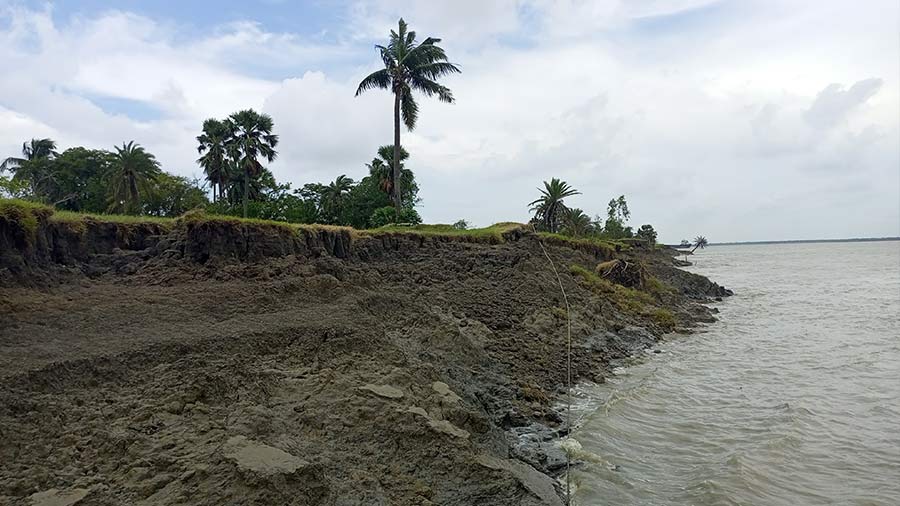Sunderbans, already highly impacted by climatic changes, is at grave risk of becoming even more vulnerable if greenhouse gas emissions are not controlled at the earliest, global experts have warned.
A report published ahead of the global summit, COP 27, at Sharm el Sheikh, Egypt, states that the world has, for the past year, been trying to keep the global temperature within manageable limits but not much has been witnessed.
The report points out that, without a deep cut in emission, the temperature is likely to increase by 1.5 to 2 degrees Celsius or even 2.4 to 2.6 degrees Celsius by the end of the century. This would be well above the Paris Agreement goal of limiting global warming to well below 1.5 to 2 degrees Celsius.
“Unprecedented cuts are required to meet The Paris Agreement goals and the world needs to reduce greenhouse gases drastically over the next eight years,” the report says.
Any temperature rise beyond the agreed level is expected to trigger a disaster for the global community.
“Summit COP27 must successfully address issues in vulnerable countries and areas especially like the Sunderbans,” Harjeet Singh, the head of Global Political Strategy, Climate Action Network International, told The Plurals.
Saleemul Huq, a global scientist on climate change and advisor to Least Developed Countries in the United Nations Framework Convention on Climate Change (UNFCCC) pointed out that Cyclone Sitrang not only put the Sunderbans under severe threat, but also showed how climate has become a real risk in the region.
Several parts of the world, including the Sunderbans, are already witnessing an increasing number of long-term and immediate extreme weather events with about 1.1-degree temperature rise between 1850 and 1900, the period from when human actions have started to push up ambient temperatures significantly.
Woefully inadequate
“Despite a decision by all countries at the 2021 climate summit in Glasgow (COP26) to strengthen Nationally Determined Contributions (NDCs), the progress has been woefully inadequate and it has been a wasted year,” said the UN report. NDCs are voluntary declarations from countries about their emission cut targets.
The report called for significant reduction of greenhouse gas to meet the goals of The Paris Agreement. “With the current pledges leaving the world on track for a temperature rise of 2.4-2.6°C, unprecedented cuts in greenhouse gas emissions are needed to meet the goals of The Paris Agreement. The current policies alone would lead to a 2.8°C hike,” the report said.
At 2.4 tCO2e (tonne carbon dioxide equivalent), India’s per capita greenhouse gas emissions were far below the world average of 6.3 tCO2e in 2020, according to a new report released by the United Nations Environment Programme on October 27. The United States’ per capita emission is about 15 tonnes CO2 equivalent.
“We have to stop filling our atmosphere with greenhouse gases, and stop doing it fast,” said Inger Andersen, executive director of UNEP.
Hope hangs in balance
The UN report, however, has expressed hope that the situation can still be retrieved (to an extent) if the world leapfrogs its emission cut actions quickly.
It underlines that “transforming the electricity supply, industry, transport and buildings sectors, and the food and financial systems would help avoid a climate disaster”.
“The best-case scenario points to only a 1.8°C increase, so there is hope,” said the report, while admitting that “this scenario is not currently credible”.
Sunderbans in trouble
“If things go on in this manner, the mean temperature in the Sunderbans may rise above 4 degrees Celsius,” said the Assessment Report (AR) 6 prepared by Intergovernmental Panel for Climate Change (IPCC), a UN platform comprising nearly 3,000 scientists.
The AR report, released some time back, says that the temperature in the Sunderbans may rise by 1.5 degrees Celsius by the end of the century and that it can go up by 2.2 degrees Celsius if the global temperature rise remains in the range of 2-3 degrees Celsius.
The report further said that the maximum temperature in the Sunderbans may rise to 45.6 degrees Celsius and will be beyond 35 degrees Celsius for nearly 70 days in a year and the sea level rise (in the Sunderbans) may increase six times as compared to the present day while maximum rainfall in a day may increase by 42 per cent.
“Apart from the physical threat due to climate change, we have already seen how it impacts the livelihood of the locals in Sunderbans, including a large-scale forced migration,” said a climate expert associated with Jadavpur University.
